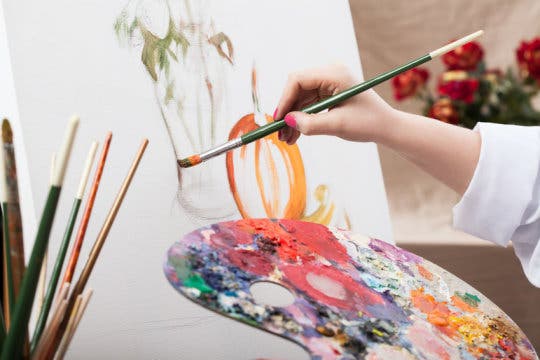Creative thinking requires the simultaneous activation of two distinct networks in the brain, the associative and normative networks. Higher connectivity between these completely different systems of your brain leads to new, original and useful ideas, University of Haifa research concludes.
Creativity is our ability to think in new and original ways to solve problems. But not every new idea can be called “creative.” If it’s not fully applicable, an idea is just considered to be unreasonable. Looking into how our brain can turn out both of these types of ideas, Dr. Naama Mayseless concludes that “creative thinking apparently requires ‘checks and balances’.”
The team hypothesized that for a new idea or concept to be produced, two different — and perhaps contradictory — brain networks must work together. So in order to verify this, they organized two tests; in the first one, respondents were give half a minute to come up with a new, original and unexpected idea for the use of different objects. Answers that were provided infrequently were given a high score for originality, while frequently-given ones scored low.
For the second part of the tests, the volunteers were asked to give the best characteristic and accepted description of the same objects. Just as the first test, they had half a minute to complete this task.
During these tests, all subjects’ brain activity was recorded with the use of an fMRI machine, to record how the brain behaved while it was working on the answers.
The researchers found increased brain activity in an “associative” region among participants whose originality was high. This region, which includes the anterior medial brain areas, mainly works in the background when a person is not concentrating, similar to daydreaming.
But this region doesn’t operate alone. For the answer to be original (i.e. not unreasonable) another brain network had to activate in collaboration with the associative region — the administrative control region. The authors describe it as a more “conservative” part of the brain, that handles social norms and rules. The researchers also found that the stronger the connection between these two areas when they activated — the greater the level of originality of the answer.
“On the one hand, there is surely a need for a region that tosses out innovative ideas, but on the other hand there is also the need for one that will know to evaluate how applicable and reasonable these ideas are. The ability of the brain to operate these two regions in parallel is what results in creativity. It is possible that the most sublime creations of humanity were produced by people who had an especially strong connection between the two regions,” the researchers concluded.
This research was conducted as part of Dr. Naama Mayseless’ doctoral disertation, and was supervised by Prof. Simone Shamay-Tsoory from the Department of Psychology at the University of Haifa in collaboration with Dr. Ayelet Eran from the Rambam Medical Center.










